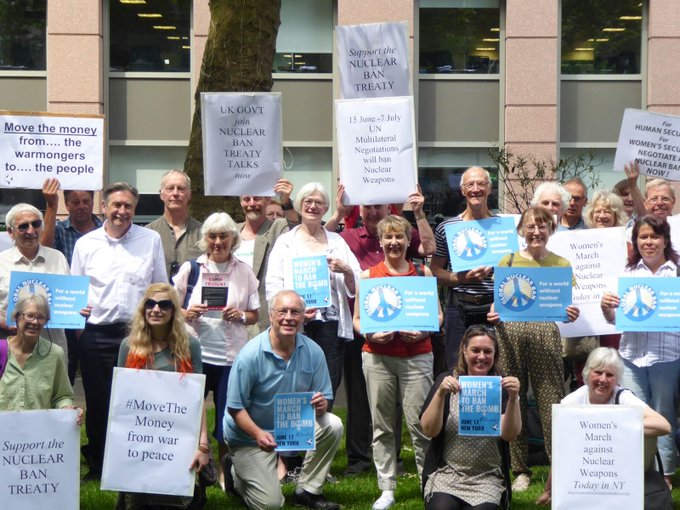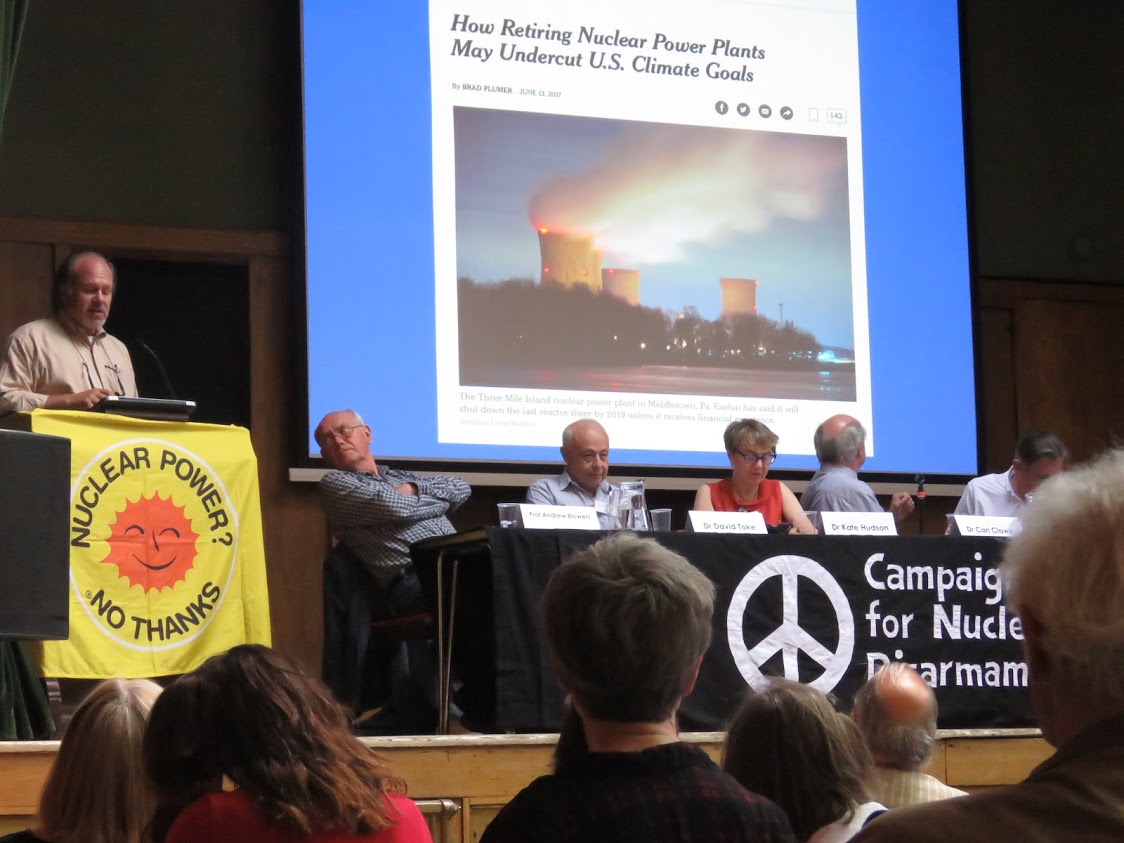What you missed at the #NoNeedforNuclear Conference

Support for the UN Disarmament talks at the #NoNeedforNuclear Conference this Saturday 17th June
On the Saturday just gone, 17th June, while the rest of London sweltered at the mercy of the hottest weekend so far this year, enthusiasts, activists, and journalists alike, descended from across the world to Conway Hall, Holborn,to take part in the first nuclear power conference in 30 years, No Need for Nuclear: The Renewables are Here hosted by the Campaign for Nuclear Disarmament.

With over 150 attendees of all ages, and 17 speakers comprised of distinguished academics, MPs and industry representatives, the conference was deemed a great success. The conference was graced with a keynote address from Caroline Lucas MP, all the way from New York where the UN disarmament meetings are taking place. The conference was broken into 4 sections: What’s wrong with Nuclear power? and The Politics of Nuclear Power followed by UK Energy Demand, Energy Supply, and The Renewables after lunch.

Despite the morning focusing primarily on the problems associated with nuclear power, and the afternoon discussing the benefits of renewable energy, trends began to emerge from the talks quickly. It soon became apparent how renewables were not only a quicker, more versatile alternative but their cost has nose-dived in the past 20 years despite the technology having improved leaps and bounds. So much power has been produced, for example, by wind farms that prices have fallen to 1/10th of their normal level. We heard how only a few weeks ago, the National Grid reported that renewables supplied 50.7% of power to the UK, a huge milestone towards a world free from nuclear power/fossil fuels.
On the other hand, projected costs for new nuclear programmes in the UK, like the one at Hinkley Point C, are estimated at €39 billion but likely to run higher. This, teamed with bankruptcies at Areva and Westinghouse/Toshiba and the indebtedness of EDF, questions have already been raised as to whether these programmes will go ahead or simply be footnoted within public expenditure. What many at the conference pointed to was how nuclear was definitely on the retreat, and the argument for renewable energy only gets stronger and stronger.

We were shocked by the opening talks which discussed the damage that nuclear power poses to the general population, even when the plants themselves do not malfunction. Talks shed light on government sponsored investigations into the radiation related illness and cancers experienced by those that lived close to power plants. Despite the investigation known as KiKK being intended to illustrate how living near nuclear power plants was harmless, the results backfired, seeing rising incidents of child leukaemia and other forms of cancer solids rising by as much as 120% within 5km of power plants.
This was when a plant is performing as expected. When it malfunctions, like in Chernobyl, the impacts were seen to be as far reaching at the UK, even further. Locally, flora and fauna in Chernobyl have been under duress for 30 years, mutations leaving them victim to cancers and cataracts while economic costs are estimated to have been as high as $700 billion. Costs for Fukushima are expected to surpass this figure, taking into account the losses faced in shutting down the 50 power plants in the aftermath of the 2011 earthquake/tsunami.
These statistics were stuck in our minds as we listened on to how the new Conservative government remained silent on nuclear power in their latest manifesto, and Labour continues to bicker internally on its position on the subject despite the very public views aired by their leadership. Speakers also called attention to the trade unions failure to recognise just how many jobs renewables provide for the industry over nuclear, 16 times as many according to official data.
A common theme was talking about planned phasing-out of the UKs remaining 8 nuclear power stations as has been happening across Europe in Switzerland and Germany. One speaker demonstrated how between 300 and 4000 local energy schemes had been organised by co-ops up and down the country, erecting wind turbines and solar panels in an effort to pick up the slack in the government’s position. With over 10,000 members and 500 local authorities these programmes are bringing democracy to the people, uniting communities and providing independence from energy corporations.

The presence of MPs at the conference was also an essential part of the dialogue. Three Green Party representatives and one from Labour, facilitated a cross party debate which engaged directly with the concerns of the audience. Their component demonstrated the need to engage with these issues on a political level if we are see changes occur in the future.
A conference highlight was the photograph taken in Red Lion Square at the lunch break to contribute to the worldwide Day of Action in support of the UN Conference on Nuclear Disarmament in New York. Over 100 of the attendees gathered in solidarity, and it lifted everyone’s spirits to see this show of force on such a decisive day. The success of the conference, begs the question, what happens next? CND have already began considering the possibility of a similar conference in the years to come. Let’s hope it won’t be another 30 years!
By George Rutledge, CND Research Assistant
**Please note, the views expressed in this piece are that of the individual, and not representative of CND as an organisation***
Fancy writing a blog for YSCND? Send us an email at yscnd@riseup.net or a Facebook message at facebook.com/yscnd
